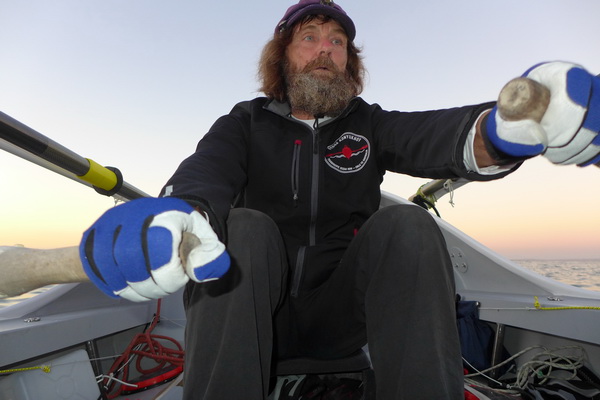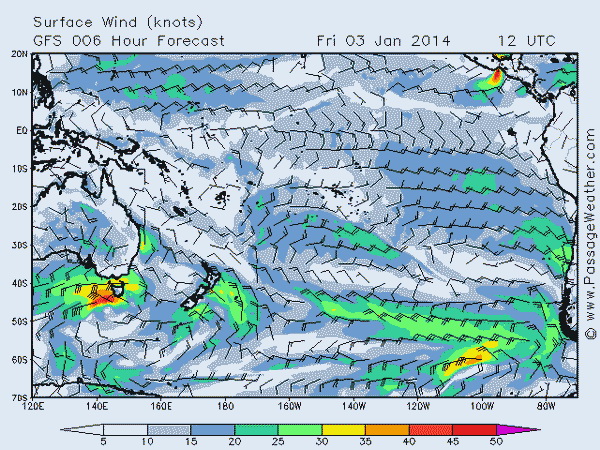Day 13

Fedor on the satellite phone: “The night was very intense. The wind was 20-25 knots. With the squalls the wind would reach up to 30 knots. There were a few times when the waves hit the boat so hard that I thought: that’s it, we are going to capsize. Once every hour the port side experiences the loudest and powerful blow that brings the boat to the brinks of capsizing. From the port side I released 100 meters of 12 mm rope with fender attached to add some resistance against the waves. My head is in a kayak helmet. This weather is starting to wear me out psychologically. I’m very tired. There is no way to rest right now. The hull gets a blow after a blow, and then another blow; and it happens nonstop. The waves lift Tourgoyak five meters up, and from there the boat surfs down at a speed of 6 knots. Then comes another ride just like that. It happens every hour: day and night. Despite my previous five circumnavigations, I feel sea sick here. When is it going to end? All I need is the wind of 10, not more than 15 knots. For a row boat anything beyond 20 knots is too much, but when there is 30 knots – it is a complete survival. On top of this wind, the waves are gigantic. The autopilot is working well though. Both main accumulators ran out of juice during last night, so by morning I turned on the reserve batteries. There is no sun, low clouds and occasional drenching rain. The Ocean is very loud. The white caps are everywhere. The situation is rather depressing.
I constantly think about my boat. This is her first time in the ocean. There is no history of how she behaves in storms and strong winds. My only fear is of capsizing. The temperature of the Humboldt Current is extremely cold. I’m wearing a waterproof suit from Musto MPX. I was wearing the same suit when sailed around the Cape Horn. My boots are from Dubbary. A hat and the gloves are mandatory. And of course, I live with the harness attached to me. This has been my attire for the last 10 days.
Back in 2002 when I was crossing the Atlantic Ocean, I had an easier time psychologically. Despite the wind of 20 knots, I knew that the transatlantic crossing has been done many times, and dozens of ocean rowers have completed this crossing successfully. Here, in the South Pacific, everything is unchartered; everything is for the first time. The massiveness of the ocean is pressing hard on me. I have to be honest: I didn’t expect it to be so hard.
Before me, this route was taken by a Swedish adventurer Anders Svedlund in 1974. He left Huasco, Chile and crossed the ocean all the way to Samoa. Unfortunately I don’t have maps of his course, and don’t know what the weather and winds were like during his crossing. For me the biggest worry is the wind. If it increases, how am going to survive? If I drop the sea anchors it would slow the boat significantly. However, this could also mean that the gigantic waves would crush the boat unmercifully. If I continue to ride Tourgoyak up and down the waves there is always a high risk of capsizing or rolling over.
The accumulators are running low so I must end this phone call. I thank God that I survived the night. Pray that the day will be a bit easier.”

According to the weather map, Tourgoyak has entered another local cyclone. Such weather will continue for the next 24 hours. Once Fedor is able to reach the Tropic of Capricorn (or Southern tropic) the wind should drop to 15-20 knots. Fedor and Tourgoyak are experiencing the Trade Winds of the South Pacific Ocean and the Humboldt Current. Judging from the weather reports the Trade Winds have reached their true potential and will continue to “work” like this all the way to French Polynesia. It is possible that at some point the winds won’t be as strong, but in general, Fedor shouldn’t expect the wind dropping to 5 knots any time soon. The now low temperature (16 C) of the Humboldt Current should rise to 24 C once Tourgoyak reaches the center of the South Pacific Ocean.

To get the weather report for the next week click here (look for South Pacific Ocean).
The map of the Tourgoyak’s course: http://yb.tl/konyukhov2
The detailed map of the course: www.oceanrowing.com/Konyukhov/Pacific2013/dist_map.htm
Translated by Tatiana Koreski